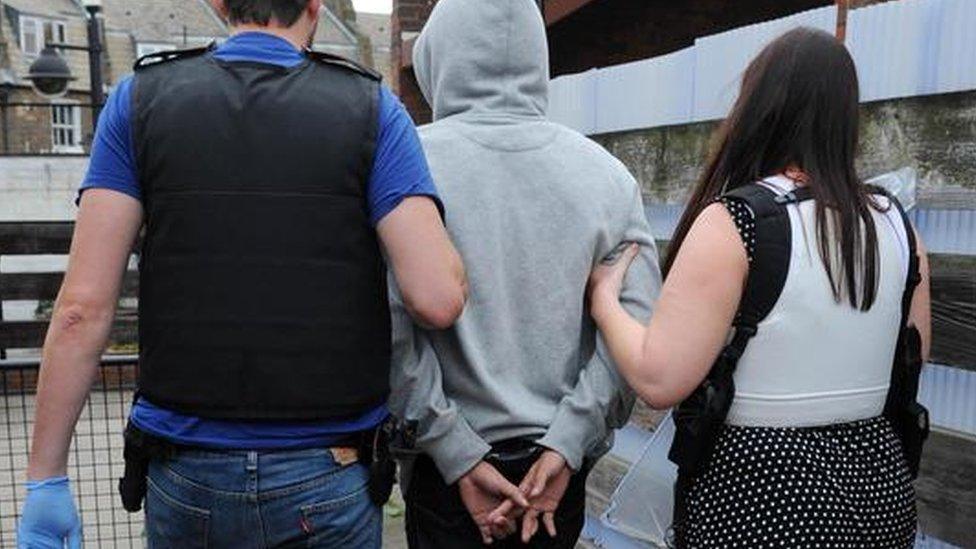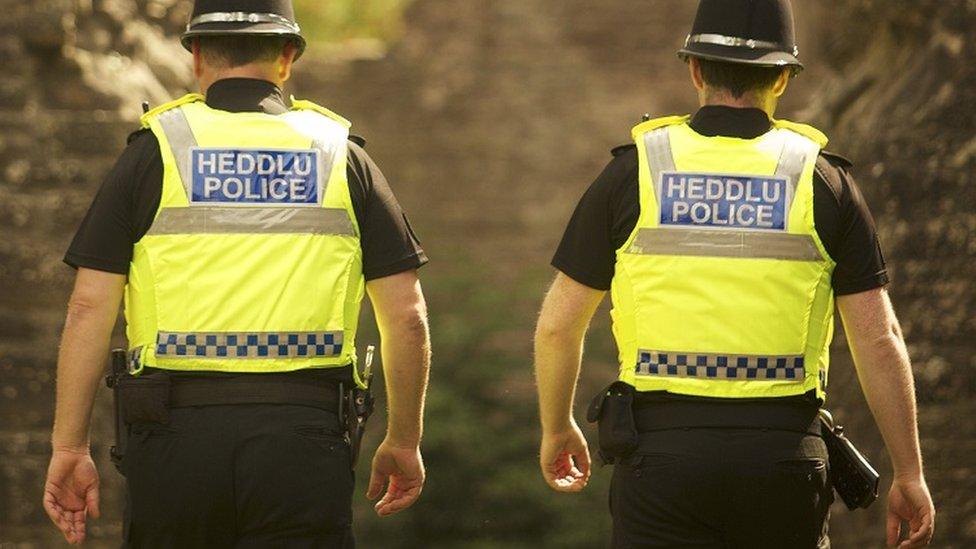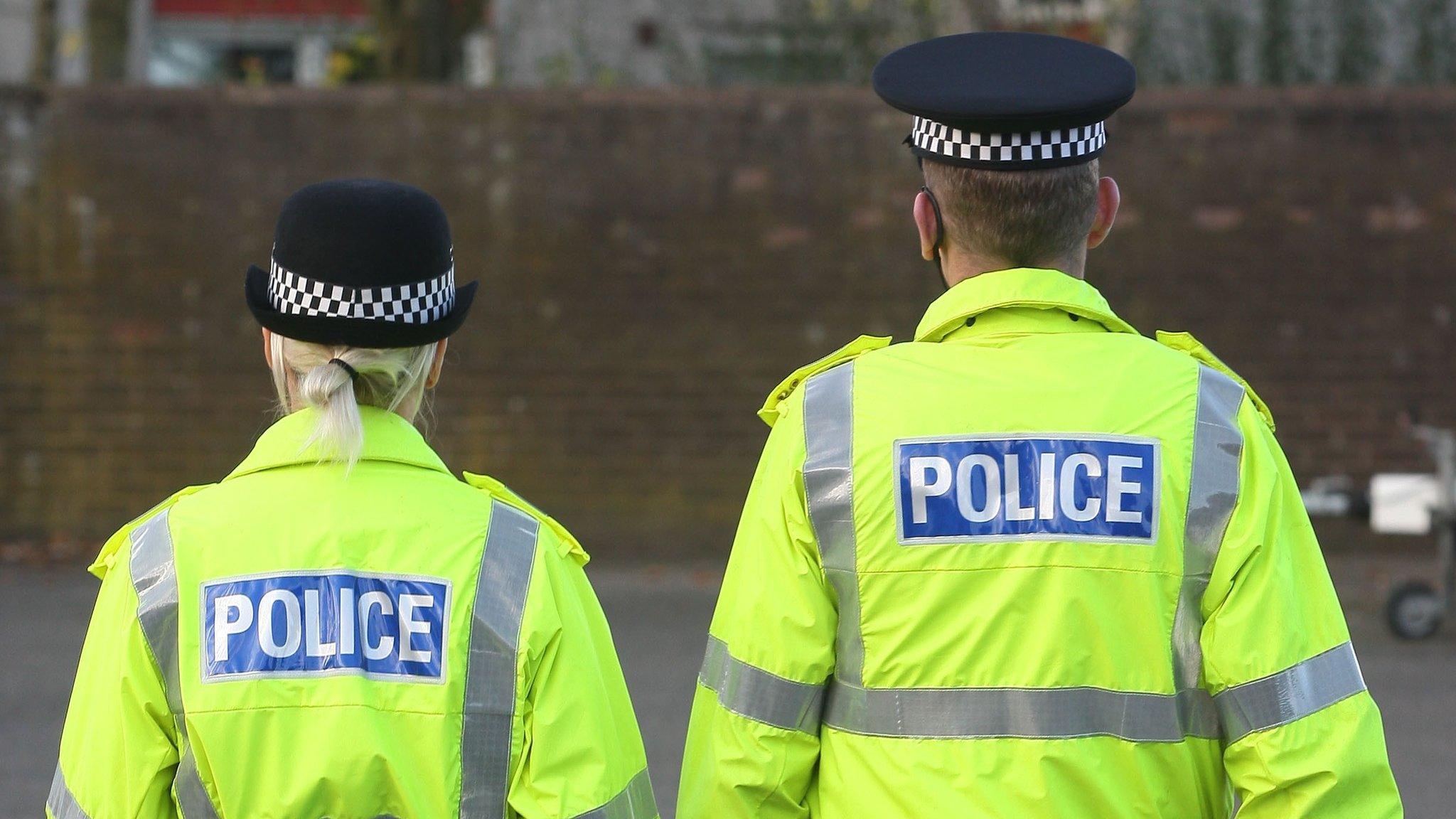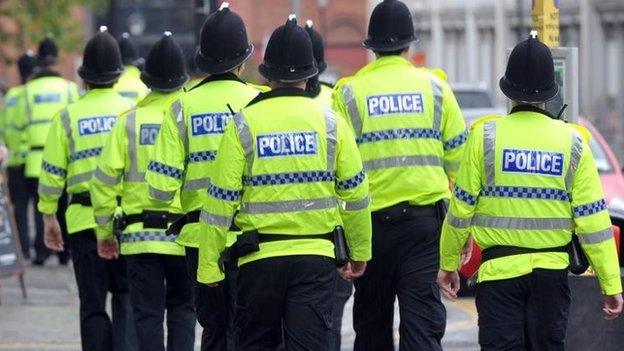Violent crime figures show 'small but genuine increase'
- Published

A long-term decline in violence appears to have come to an end, latest crime figures for England and Wales suggest.
Offences recorded by police in the year to the end of June show a 24% rise in the number of violent crimes compared with the previous year.
Much of that rise is understood to be due to changes in the way offences are recorded and categorised.
But statisticians say there has been a small genuine "up-tick" in violent crime after 20 years of decline.
Police data shows:
There were 114 more killings than in the previous 12 months, though the number includes the 96 cases of manslaughter resulting from the Hillsborough disaster
Knife crime rose by 9%
Firearms offences went up 7%, largely driven by an increase in offences involving imitation weapons and BB gun-type air pistols

Analysis

By BBC home affairs correspondent Danny Shaw
The police crime figures are particularly hard to interpret.
At first sight, they appear to show substantial and worrying increases in a wide range of violent crimes.
But strip away changes in recording practices that are thought to be responsible for the apparent growth in violence and what we're left with is a smaller rise, with spikes in gun and knife crime.
Indeed, the Crime Survey findings and the annual Cardiff University study of assault victims treated at A&E units, published in April, support the view that the long-term downward trend in violence is over.
Statisticians are aware, however, that the figures can present a confusing and misleading picture so they are developing plans for a "crime severity score".
This will be a way to measure the harm caused, rather than simply counting the number of offences.

When the 96 Hillsborough deaths are excluded from statistics, data shows 584 people were killed in England and Wales in the year to June - a 3% rise on the previous 12 months.
This works out as 10 people in every million, which is lower than a decade ago (14 per million).
The latest report on crime in England and Wales, external by the Office for National Statistics includes offences recorded by the police and the results of the independent Crime Survey for England and Wales.
Overall, there were 6.4 million incidents of crime, according to the Crime Survey.
Police recorded 4.6 million offences in the year ending in June 2016, an annual rise of 7%.
John Flatley, of the Office for National Statistics, said the rise was due to a number of factors, including the recording and categorising of crimes, more victims reporting crimes and a "small but genuine increase" in some violent crime.
Police data also revealed that sexual offences recorded by the police increased 14% on the previous year.
Estimates from the Crime Survey showed the proportion of adults who were victims of sexual assaults in the previous year had not significantly changed.
Policing minister Brandon Lewis said police reform was working and that crime was down by a quarter on 2010 levels, according to the Crime Survey, meaning families and communities were safer.
He added that the rise in police-recorded offences reflected improved recording practices and more victims coming forward, which he welcomed.
Violent crime covers a range of offences from minor assaults, harassment and abuse that may not result in any physical harm to the victim, to incidents of wounding and murder.
- Published21 July 2016

- Published21 July 2016

- Published11 February 2016

- Published22 January 2015

- Published21 January 2014